Patterns of Motion
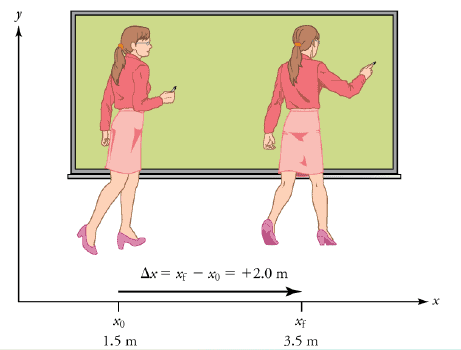
When an object is in motion, its position changes. Its position can change in many ways, including: straight line - a circle - back-and-forth vibration.
The simplest form of motion is the kinds of motion that take place in one direction (One-dimensional motion). An example of this one-dimensional motion is the motion of a commuter train on a straight track, the train can move either forward or backward along the tracks. It cannot move left and right or up and down.
It seems simple to describe the motion of the train. As the train begins its route, it is at the first station. Later, it will be at another station farther down the tracks. But Earth is spinning on its axis, so the train, the stations, and the tracks are also moving around the axis. At the same time, Earth is moving around the sun. The sun and the rest of the solar system are moving through our galaxy. This galaxy is traveling through space as well.
When faced with a complex situation like this, physicists break it down into simpler parts. One key approach is to choose a frame of reference against which you can measure changes in position.
Position (Cartesian Coordinate System with O at zero point) and Displacement
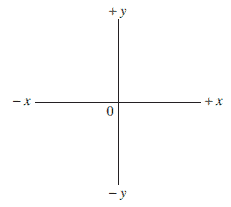 Any measurement of position, displacement, or velocity must be made with respect to a reference frame, in physics, we often draw a set of coordinate axes to represent a frame of reference. And we can always place the origin (x=0 and y=0), and the directions of the x and y axes, as we like for convenience. Standard set of xy is like:
Any measurement of position, displacement, or velocity must be made with respect to a reference frame, in physics, we often draw a set of coordinate axes to represent a frame of reference. And we can always place the origin (x=0 and y=0), and the directions of the x and y axes, as we like for convenience. Standard set of xy is like:
In physics, any frame of reference can be chosen as long as it is used consistently. If you are consistent, you will get the same results, no matter which frame of reference you choose. But some frames of reference can make explaining things easier than other frames of reference. For one-dimensional motion, we often choose the x axis as the line along which the motion takes place. Then the position of an object at any moment is given by its x coordinate. If the motion is vertical, as for a dropped object, we usually use the y axis.
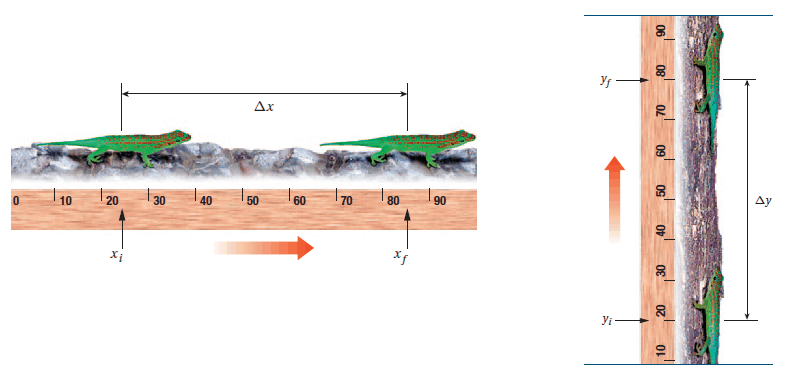 As any object moves from one position to another, the length of the straight line drawn from its initial position to the object’s final position is called the displacement of the object. displacement is defined as the change in position of the object. As the particle moves from an initial position $\vec{x_i}$ to a final position $\vec{x_f}$ , its displacement is given by:
As any object moves from one position to another, the length of the straight line drawn from its initial position to the object’s final position is called the displacement of the object. displacement is defined as the change in position of the object. As the particle moves from an initial position $\vec{x_i}$ to a final position $\vec{x_f}$ , its displacement is given by:
$$\Delta \vec{x} = \vec{x_f} - \vec{x_i}$$
hints
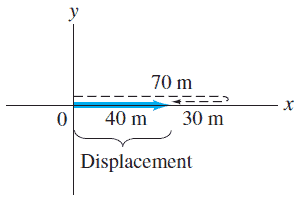
- Displacement is a vector quantity (magnitude and direction), and are represented by arrows in diagrams.
- Displacement is not always equal to the distance traveled.
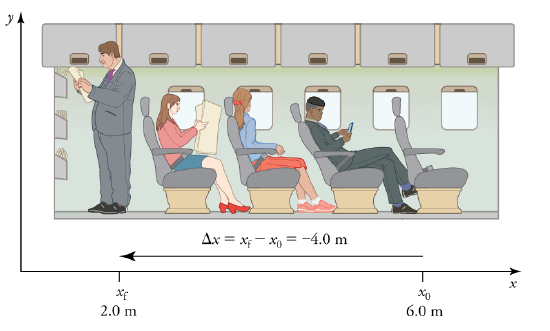
- Displacement can be positive or negative.
Picturing Motion (Where and When?)
The description of motion is a description of place and time. You must be able to answer the questions of where and when an object is positioned to describe its motion. Next, you will look at some tools that are useful in determining when an object is at a particular place.
Making a Motion Diagram
Exercises
Position-Time Graphs
When analyzing motion, particularly when it is more complex than the examples considered so far, it often is useful to represent the motion of an object with a Graphs of the object’s position and time.
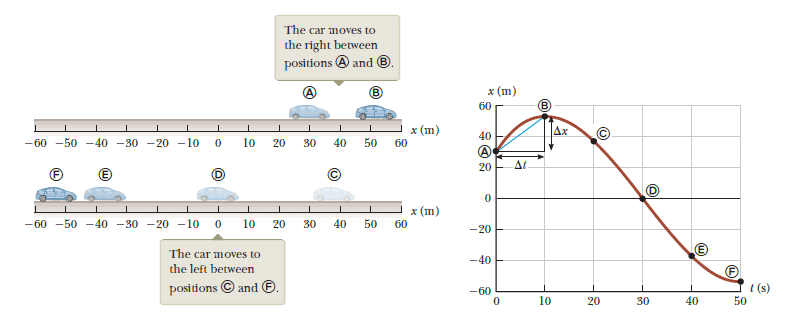 A particle’s position $x$ is the location of the particle with respect to a chosen reference point that we can consider to be the origin of a coordinate system. The motion of a particle is completely known if the particle’s position in space is known at all times.
A particle’s position $x$ is the location of the particle with respect to a chosen reference point that we can consider to be the origin of a coordinate system. The motion of a particle is completely known if the particle’s position in space is known at all times.
It is much easier to see changes in position from the graph than from a verbal description or even a table of numbers.
You don`t have permission to comment here!
Report